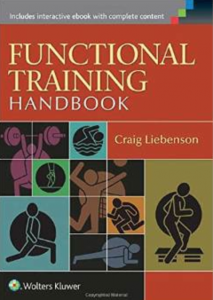 The Functional Training Handbook is a long-awaited text from the chiropractic rehab pioneer, Dr. Craig Liebenson. Dr. Liebenson has done an excellent job in bringing together the scientific research, clinical expertise, and practical experience of the world’s experts in rehabilitation, exercise, and training. An all-star list of contributors includes Sue Falsone, Robert Lardner, Greg Rose, Todd Ellenbecker, Mark Kovacs, Stu Magill, Mike Reinold, and Tim Hewett.
The Functional Training Handbook is a long-awaited text from the chiropractic rehab pioneer, Dr. Craig Liebenson. Dr. Liebenson has done an excellent job in bringing together the scientific research, clinical expertise, and practical experience of the world’s experts in rehabilitation, exercise, and training. An all-star list of contributors includes Sue Falsone, Robert Lardner, Greg Rose, Todd Ellenbecker, Mark Kovacs, Stu Magill, Mike Reinold, and Tim Hewett.
With roots in the Prague School, based on the work of Drs. Karel Lewit and Vladimir Janda, this handbook brings training and conditioning to a new level. Combining elements from prevention to rehab to performance, the Functional Training Handbook offers readers a foundation from a contemporary view of the way we approach functional movement.
The foundation (Part 1) for the functional approach begins with an understanding of Developmental Kinesiology (Chapter 4), the process by which we learn to move, and the process by which we restore proper movement. Proper assessment of function and faulty movement patterns (Chapter 6) is well explained as the starting point for functional training. My favorite section of the handbook is Part 2 – Sport-specific training considerations. This section features exercise and training experts from 14 different sports, each providing specific exercises and a functional approach to strength and conditioning. Part 3 provides a great section on “off-season” considerations, a critical component that sometimes misses the attention it deserves.
The Functional Training Handbook ends appropriately with the role of motor control and athletic development, bringing this book full-circle from our control of movement as babies to teaching athletes to move properly.
I thank Dr. Liebenson for bringing this book together, and recommend it for a variety of professionals interested in improving functional movement, including physical therapists, chiropractors, athletic trainers, and strength and conditioning specialists.